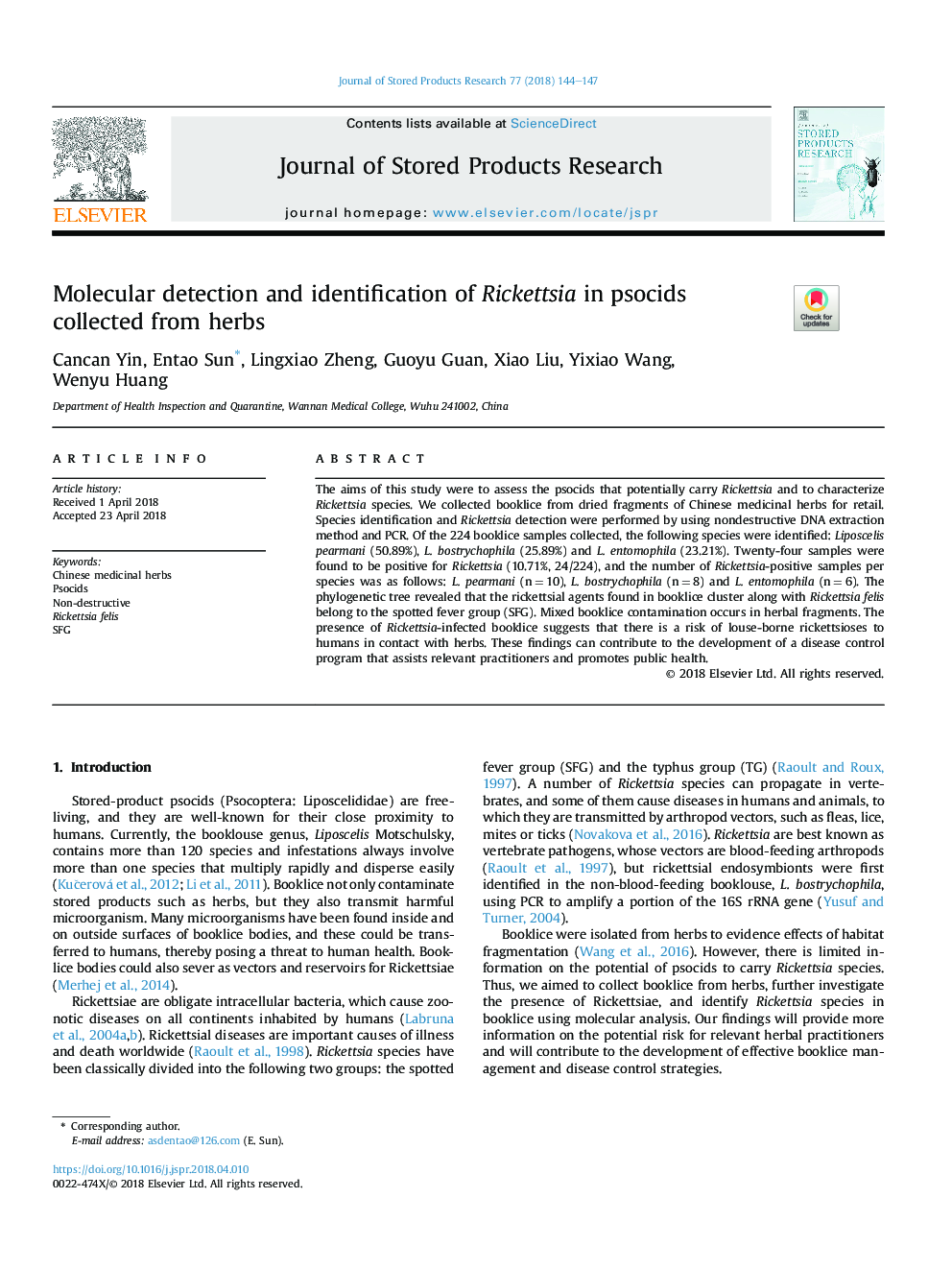| Article ID | Journal | Published Year | Pages | File Type |
|---|---|---|---|---|
| 8881726 | Journal of Stored Products Research | 2018 | 4 Pages |
Abstract
The aims of this study were to assess the psocids that potentially carry Rickettsia and to characterize Rickettsia species. We collected booklice from dried fragments of Chinese medicinal herbs for retail. Species identification and Rickettsia detection were performed by using nondestructive DNA extraction method and PCR. Of the 224 booklice samples collected, the following species were identified: Liposcelis pearmani (50.89%), L. bostrychophila (25.89%) and L. entomophila (23.21%). Twenty-four samples were found to be positive for Rickettsia (10.71%, 24/224), and the number of Rickettsia-positive samples per species was as follows: L. pearmani (nâ¯=â¯10), L. bostrychophila (nâ¯=â¯8) and L. entomophila (nâ¯=â¯6). The phylogenetic tree revealed that the rickettsial agents found in booklice cluster along with Rickettsia felis belong to the spotted fever group (SFG). Mixed booklice contamination occurs in herbal fragments. The presence of Rickettsia-infected booklice suggests that there is a risk of louse-borne rickettsioses to humans in contact with herbs. These findings can contribute to the development of a disease control program that assists relevant practitioners and promotes public health.
Related Topics
Life Sciences
Agricultural and Biological Sciences
Agronomy and Crop Science
Authors
Cancan Yin, Entao Sun, Lingxiao Zheng, Guoyu Guan, Xiao Liu, Yixiao Wang, Wenyu Huang,
